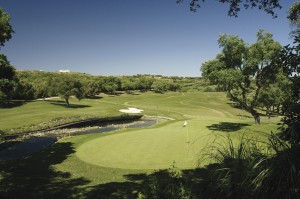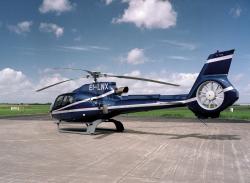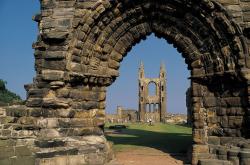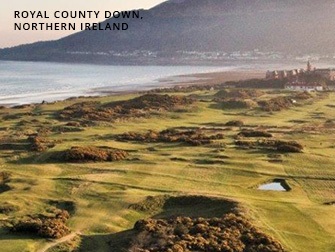Click here for trip summary & overview
About The Trip Synopsis
Obviously, to make this trip work I needed the help of at least 100 people. In the following trip description I have mentioned the names of all the people involved to acknowledge their participation and to highlight how many it took to get the job done. (At the courses where I did not have a direct contact I tried to find a member to make the arrangements instead of going direct to the pro shop.) In order not to be repetitious in using superlatives for all those who were helpful, I am going to just mention each name and the date we first met. From this you can surmise whether they are old friends or new. In other words, please hold your applause until everyone has been mentioned. This approach will also be used for the private houses that I had the honor of staying in. They were all lovely, warm, and cozy.
One of the best parts of the trip was seeing these old friends again. Unfortunately, the nature of the trip meant that the hard part was saying goodbye almost as soon as I said hello. It was certainly here today, gone tomorrow.
Unless otherwise noted, I played from the middle (member’s) tees, which were usually in the 6,500-yard range. I am not long enough off the tee to enjoy playing from “the tips.”
The strategy for this blow-by-blow (definitely not stroke-by-stroke) account of the trip is to give you an indication of how I arrived at each course, who was involved in the arrangements, and any interesting anecdotes. I thought it would be useful to mention world ranking, course age, designer, and my playing relationship with each course. Most of the courses are not being discussed in any detail. Individual detail for many of the courses can be located in that “O” where the year last played is indicated in the following daily diary. (My book will cover many of the significant aspects of each course.) Also mentioned are names of eating establishments and places where I slept. This should give you a taste of the quality of my travel, hotels, and meals, which rose and fell like a barometer.
So here we go:
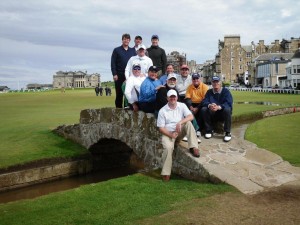
Day 1 Sunday April 27
Drive Naples/Miami Fly Miami/Ft. Worth Play Colonial Fly Ft. Worth/Miami
The trip was originally supposed to start with the Dominican Republic (Casa de Campo); Colonial in Texas was to come two weeks later. Unfortunately, my Texas contact was too laid back about my project, and it was not until March that I learned of a big problem with Colonial. Absolutely no guest play is allowed three weeks before the PGA Tour Colonial Invitational held May 22 through May 25. In talking to the sympathetic head professional Dow Finsterwald, Jr., I realized the only practical approach was to start the trip a day early with Colonial and therefore finish a day early. I was committed to 100 courses in 100 days, but the starting date was not set in stone, and the last day on the original schedule was my home course, Baltusrol, which could easily be moved into a more convenient slot as the trip progressed. I was initially hoping for a grand finale at Baltusrol with family and friends, but minimizing disruption to the schedule came first. On the new day chosen for Colonial there were to be a members’ tournament in the morning and a 1:45 pm shotgun in the afternoon. Dow reserved a spot for me in the shotgun.
At 5 am a threesome of Dan Turner, traveling companion, and yours truly left Naples by zooming eastward across Alligator Alley and then south to the Miami International Airport in my fully loaded Cadillac Fleetwood. The drive covered 127 miles and one wrong turn, where we were greeted by a madhouse 7 am airport crowd. Dan dropped the two of us and luggage at American Airlines for our 1,121-mile 7:45 am flight to the Dallas/Ft. Worth airport. After landing (watch set back one hour) a Hertz car was rented and there was a 30-mile drive to just south of downtown Ft. Worth. Once at Colonial we took each other’s picture beside the imposing life-sized Ben Hogan statue near the clubhouse.
Heavy rain had fallen for all of the 48 hours preceding our arrival, so no electric carts were permitted on the course. This caused cancellation of both the originally scheduled members’ morning tournament and the afternoon shotgun. Told the course was available, we slung our bags over our shoulders and set off for the first tee. There were only a few players, and we basically had the course to ourselves.
At about noon the weather was raw on this early-spring Texas day — 55 degrees, overcast, dark clouds, and very windy. Colonial (rated 56, designed by Bredemus 1935 and remodeled by Maxwell)(played one round June 1976) is a busy full-service private country club in an urban/suburban setting. The course is fairly compact and mostly flat with a few small hills. Despite the previous rain, the course was playable although the turf was heavy under foot. I did not keep an official scorecard but calculated a legitimate 79 when the round was over.
Not having had lunch, we stopped at Macaroni’s, an Italian restaurant, to celebrate the successful completion of the first course. Then the 8:20 pm return flight brought us back to Miami, where Dan was there to greet us at midnight (watch set ahead one hour back to where it was when we started). The pillow at the nearby Courtyard by Marriott was reached at 1:15 am. Thus the first day involved 21 hours, 140 miles of driving, and 2,242 miles of flying. It was not an ideal starting schedule but was typical of what had to be done to accomplish the mission.
Day 2 Fly Miami/Dominican Republic Play Casa de Campo(Teeth of the Dog)
This day was fairly easy compared with Day 1. Dan left my companion and me at the Miami airport for an 11:30 am 886-mile American Airlines flight to La Romana in the Dominican Republic (watch set ahead one hour). Casa de Campo is on the southeast coast and 90 miles east of Santo Domingo. Before 1995 the only way to get to Casa de Campo was to fly to Santo Domingo and be driven two hours to the resort. Now the tiny runway at La Romana has been expanded, and there is one commercial 727 flight each day. Because the flight is almost always fully booked you are well advised to make reservations early.
Even though there was only one arriving flight, passport control seemed to be as slow and cumbersome as previously experienced in Santo Domingo. After registering and being shown our casitas we walked over to the golf shop and discovered that the course was available for play. Although the official round was not scheduled until the next day, there was no point in passing up an opportunity to play a top course in beautiful weather.
At 3 pm it was 88 degrees with bright sun and a slight breeze. The Teeth of the Dog (rated 20, designed by Dye 1971)(played May 1988/2 rounds) is part of a resort/real estate development and is bordered by private homes, three-story condominiums, the beautiful aqua-blue Caribbean Sea, and the airport. The runway extends into the ninth fairway, and on the twelth tee there is a forced carry of about 140 yards over the runway with the airport terminal to the right of the tee. Because there were only a few people on the course a gas-powered cart enabled us to finish at 7:15 pm in total darkness. An acceptable meal was had in the resort’s informal dinning room, and we were back in our rooms by 10:15 pm.
Day 3 Play Teeth of the Dog Fly Dominican Repub./Miami Drive Miami/N. Palm Beach
Following a quick breakfast we were off the first tee as a foursome at 7:30 am. My bag was on a gas-powered cart, but I was walking. There was a bright sun and a bit of a breeze. The temperature started in the 70’s and soon reached the high 80’s. The pace of play was slow as we helped our typical resort players look for their wayward shots.
After golf we had a long and informative talk with the busy golf director Gilles Gagnon. After lunch we were driven the short distance to the terminal for our 3 pm departure to Miami. The outgoing passport control was even more chaotic than the incoming. A long single line snaked throughout the small and primitive open-air hut. After some time had passed it was learned that there had been an electric power failure and all the lights had gone out. In sweltering temperatures a government official finally appeared to “accelerate” the process. He took the long single line and created a much shorter double line. However, there was no increase in processing speed. When we turned a corner the problem became painfully apparent; there was only one person in a dark corner reviewing passports via a small flashlight. So forming the double line made absolutely no sense and even exacerbated the problem by creating more crowding in a hot and tiny area.
The only other time I had been to the Dominican Republic I had returned home and been terribly sick for almost a week with a wicked intestinal problem. With this in mind I even contemplated scheduling Casa de Campo toward the end of the trip. Needless to say, I was ultra-cautious during our 24-hour stay and am happy to report that I came away unscathed.
At 5:30 pm we arrived in Miami (watch set back one hour), where much security, including dogs sniffing people and luggage, was evident. Passport control was thorough and efficient. Dan met us, and we three drove 90 miles north to North Palm Beach (stopping for dinner at the Red Lobster in Boca Raton) and the Holiday Inn Express.
Day 4 Play Seminole Drive North Palm Beach/Orlando
At 7 am we took advantage of the complimentary cold breakfast at the motel. By 8 am we were ushered through the guard gate at Seminole and were greeted by members Tom Keresey (1973) and Ollie Havens (1977) at the entrance to the pink Spanish-architecture two-story clubhouse (one of the most distinctive in the world). The locker room is the most renowned in the world, and its layout has been copied by The Golf Club (Ohio) and Shadow Creek (Nevada). Basically it is an enormous room with a very high ceiling and wooden-door lockers along the outside walls. Thus, a friendly and open atmosphere is created in this extremely private and high-status club (rated 19, designed by Ross 1929)(first played February 1977 and last played January 1996/total 4 rounds).
On the first tee at 8:45 am Tom, Ollie, traveling companion, and I had caddies. Dan walked with us and provided enthusiastic support. The weather was perfect — bright sun, 75 degrees, light breeze. A few of the holes at Seminole border the ocean, but the sand and water never come into play. The elevated fourteenth tee backs up to the beach, and you can look over the sand dunes to the pounding blue surf close by. As I stood there I was thinking of the very similar ambience 1,200 miles up the coast at Maidstone on Long Island, where I would be in 87 days if all went well.
The new element at Seminole is the shaving of greenside rough to fairway height so that there is now much more opportunity for chipping, as at Pinehurst #2. This is appropriate because Seminole and Pinehurst #2 are the best courses designed by Donald Ross. However, the shaved grass can also cause some poorly hit shots to roll a considerable distance into severe trouble. For instance, on the short par-5 third hole, a shot missing the left of the green now will race down the sharp slope to heavy vegetation. Thus a player has to think twice before blasting away at the green with a possible wild second shot.
At the turn Tom introduced me to the club president Barry van Gerbig. I was delighted to be able to tell him how pleasing it was to play the course with this new strategy that he had been responsible for instituting. When the round concluded we had a pleasant lunch in the main dining room, where the menu featured delicious bean soup and was capped by tempting cookies.
We then drove 165 miles north and west to Orlando and the La Quinta Inn. Dinner was at the adjacent Orlando Steak House, which had just opened for business and was rough at the edges. So in just a few hours we went from the penthouse (Seminole) to a greasy spoon. This abrupt shift in ambience would be typical of the entire trip.
Day 5 Play Lake Nona Drive Orlando/Brooksville
At 9:30 am we were at the Lake Nona golf shop, where we were greeted by the director of golf Gregor Jamieson (1989). Then the three traveling gypsies went out on a vacant course. Dan and my companion rode in the cart, which also contained my clubs, and I walked. The temperature was 70 degrees (eventually reached 85), the sun was shining, and there was a light breeze. Lake Nona (rated 95, designed by Fazio 1986)(first played May 1989 and last played January 1990/total 7 rounds) is a private course within a high-end real estate development. It was certainly private that day because no one else was playing.
After lunch we drove to the Orlando airport, whose actual name is McCoy International, and put Dan on a plane to Alabama. Between then and day 21 the traveling team consisted of my companion and myself and will be referred to as we. From the airport we drove 50 miles northwest to the Holiday Inn on Interstate 75 just east of Brooksville. The Inn’s buffet dinner was way below average.
Day 6 Play World Woods (Pine Barrens) Drive to Lecanto
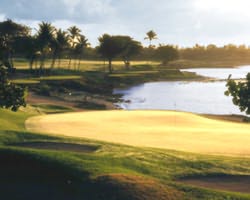
Play Black Diamond (Quarry) Drive Lecanto/Jacksonville
At 6:30 am we drove 20 miles west to the remote World Woods complex. They are still operating out of temporary quarters because the long anticipated resort hotel and clubhouse have yet to be built. However, a new road is being built, which means Tampa will be only 40 minutes away. On-site accommodations are expected in the winter of 1999.
At present World Woods (Pine Barrens Course rated 66, designed by Fazio 1993)(played January 1995/2 rounds) is a daily-fee public course with a well organized method of checking in, obtaining a cart, paying greens fees, and going to the practice tee and then to the first tee. Before play we had a brief discussion with the director of golf Stan Cooke. He had played golf at Ohio State with Gordon Dalgleish’s brother Colin (see section on Loch Lomond).
We had the first tee time at 7:30 am and played as a twosome at an unhurried pace. My companion drove the cart while I walked. It was 70 degrees, overcast with a light fog and no wind. The sun eventually came out, and it became a hot and humid 85 degrees. The course is totally isolated because there is no real estate development. The terrain is somewhat hilly, but there are some substantial distances between greens and tees, so I experienced a fairly vigorous walk. As the first out we had the course to ourselves, but friendly and efficient rangers were ever present. World Woods takes speed of play seriously.
After the round we had a longer conversation with Stan and then drove 20 miles north to Black Diamond. There we were met by a club member Terry Inslee and the head golf professional Joey Rassett. Terry is an extremely active member on the Golf Digest panel for rating courses in the U.S., and we have been corresponding for a couple of years. At 1:30 pm Terry and my companion were on a cart and I was again on foot.
The weather was sunny, very humid, in the high 80’s, with no wind. Black Diamond (Quarry Course rated 78, designed by Fazio 1987)(played one round June 1991) is a private country club within a real estate development community (Forest course designed by Tom Fazio to open in 1998). The first 12 holes of the Quarry Course are somewhat hilly; then come the famous holes. They play mostly on the rims of two quarries 80 feet above water. The fifteenth hole goes from the top of the rim straight down to the floor of the quarry. The walk down the steep cart path was easy, but the walk out on the other side was a challenge. From the green the only way out is via the steep and winding cart path. In the hot and humid weather, especially because this was the thirty-third hole of the day, the climb took on the appearance of Mount Everest and was a real tendon stretcher. This proved to be the second-toughest walk of the trip (see Wentworth for the toughest).
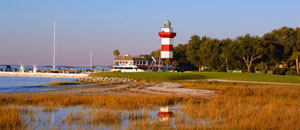
After putting out on 18 Terry announced my score as 74, which has repeatedly been mentioned forever after because I am constantly being asked my lowest score of the trip. After refreshments, we were on the road 185 miles north and east to Jacksonville. The worst traffic jam of the trip was experienced on Interstate 95 just south of Jacksonville. An accident delayed our arrival at the Courtyard by Marriott by 1 ½ hours.
The most convenient hotel for the next day’s play is the Marriott Resort, which is just off the thirteenth tee of the Stadium course. In addition 80 percent of the tee times on this course are controlled by the resort. The problem is that room rates are in the $250-a-person area, making the weekend rate of $70 a person at the Courtyard decidedly more attractive. After checking in, we stumbled on to Paesano’s Ristorante, a nearby Italian restaurant, where we had a decent 10:30 pm dinner.
Day 7 Play TPC at Sawgrass (Stadium) Drive Jacksonville/Hilton Head, SC
After a generous buffet breakfast we drove a short distance to Ponte Vedra and the guard gate of the TPC. The extremely rude lady attendant was a precursor of what was to come for the rest of the day. At the pro shop there was a discussion as to our greens fee. Over the previous ten months I had written several letters and made many calls in order to pin down the arrangements, and I thought I was going to be extended “the courtesy of the course.” However, the desk clerk was insisting on the full $180-a-person fee. Finally someone came down from the main office, and we were granted the concession of paying the PGA rate ($64).
Before play I sought out the very busy head greens superintendent Fred Klauk. He was extremely friendly and informative about the changes that had been made in the course over the past 17 years. The land is below sea level and was a total swamp before construction. The main change since opening has been to clear the dense Florida underbrush in the out-of-play areas so that the average player here with a 20 handicap could find most wayward shots and keep play at a reasonable pace.
Outside the pro shop there was a beehive of activity with a sea of people and golf carts along with the constant blaring of the loud speaker announcing tee times for the two courses. The TPC at Sawgrass (rated 83, designed by Dye 1981)(first played December 1981 and again December 1982/total 2 rounds) is a mixture of resort guests, dues-paying members, and the general public. It is the ultimate golf “factory” with a total emphasis on maximizing greens fee income. The weather was overcast with a definite threat of rain. The temperature was in the mid 80’s, the humidity was high, and the wind was strong as well as swirling.
We were on the first tee as a foursome at the appointed 10:07 am starting time. However, because there were a group on the fairway and another group on the green we did not actually get our golf balls into the air until 10:15 am. My clubs were on the motorized cart, and I was walking. For the first four holes there was a long wait on every shot with the two groups in front continually visible. No ranger made an appearance. After an interminable wait on the fifth tee, when we reached our second shots the group in front had just cleared the green. At this precise moment a ranger materialized out of nowhere and spotted me on foot. He became incensed, accused me of holding up the whole field because I was walking, and demanded that I immediately get in the cart. Although I had a great urge to tell him about having waited on every shot until now, it was apparent he did not want to listen to any excuses. Fortunately he left before we finished hitting our approach shots so I never got into the cart. Upon reaching the next tee we were back in order with the foursomes in the fairway and on the green.
After putting out on the ninth green we were met by the chief ranger and informed that it had taken us 2 hours and 40 minutes to play the front nine, as if it were our fault. Furthermore he told us that we would be kicked off the course if we did not clear the fourteenth tee by 2 pm. This demand seemed so bizarre we asked for an explanation and were told a shotgun start was to commence at 2 pm on holes one through 14. The ranger then assured us that we would not have a problem moving faster because he had warned all the groups in front to play faster. As you might surmise, this assurance proved to be an absolute joke, and play continued at a snail’s pace.
As we went down the tenth fairway the skies grew darker, and thunder claps were audible as we played the eleventh hole. On the twelfth tee the skies opened up, and a severe 15-minute downpour ensued. Play came to a screeching halt. At this moment I was thinking that I had tried to plan for every possible contingency and here I was about to be thrown off the course because of a shotgun start. The rain did stop, and we left the thirteenth green just as the armada of golf carts for the shotgun start appeared. We raced to the fourteenth tee and just barely hit our tee shots before possible eviction.
We played the last holes under threat of rain and with strong, swirling wind. As we left the eighteenth green a torrential downpour began with gale-force winds. After I retrieved the car it was discovered that my golf bag had somehow been misplaced, and it took the staff about 15 minutes to locate it. This was an appropriate ending to a “day from hell.” Not having played the Stadium course for 14 years, I had forgotten how hard it can play. Even though some of the most difficult edges have been smoothed, it is still Pete Dye at his diabolical best. Combining the design with strong and swirling winds, oppressive humidity, excruciatingly slow play (five-hour round), and ranger distractions produced one of my highest scores of the trip. I was too exhausted to add up the number of strokes, but I am sure it was in the high 80’s. So within 24 hours I went from what would prove to be the lowest round of the trip to the next- highest (see Wentworth for the highest score).
I know I have been spoiled by excellent treatment at many fine clubs and should not complain about the occasional troublesome situation. However, how would a person feel who had stayed at the high-priced Marriott Resort, paid the full greens fee, and then been evicted from the course before finishing the round? I cannot believe that the PGA Tour, which owns the operation, needs to be so greedy that squeezing for the last dollar comes before providing a decent golfing experience.
We then drove north for 205 miles through some terrible weather to Hilton Head Island and the Red Roof Inn, with a decent dinner at the adjacent Crabby Nick’s Seafood restaurant.
Day 8 Play Harbour Town Play Long Cove Drive Hilton Head/Augusta, GA
The original schedule was to play one course a day on Hilton Head and then have an unhurried drive to Augusta. However, Long Cove is closed on Mondays, and they had a mixed member-guest the day before. Because I did not want to waste half a day sitting around, I opted for another doubleheader with an open day to follow. This proved to be fortuitous because play at Augusta had to be moved up a day.
So at 7:54 am we were part of a foursome on the first tee at Harbour Town in sweaters. The bad weather of the previous afternoon had been so severe that all the Hilton Head courses had been forced to close in the early afternoon. The morning of Day 8 the sky was clear blue, there was a light breeze, and the temperature was in the 60’s. Our sweaters came off by the time we reached the tenth tee.
Harbour Town (rated 45, designed by Dye 1969)(first played November 1983 and last played May 1986/total 3 rounds) is a fully mature real estate development, but most of the houses are set back in trees and are unobtrusive. About three-quarters of the players on this very busy course are resort guests, and the remaining play comes from members who have retired to Hilton Head. Despite the stream of wall-to-wall golfers, the pace of play moved smoothly, the rangers were friendly and demonstrated restraint, and we were relaxed. It was a totally different atmosphere from the battle of the day before, which was interesting because we were on another heavily played Pete Dye course.
We then drove a short distance up the road to Long Cove and were met by the head professional Bob Patton (1993). The club (rated 80, designed by Dye 1981)(first played November 1983 and again April 1993/total 2 rounds) is private with a large membership coming from the fully built-out real estate development surrounding the course. The temperature was 70 degrees with bright sun as we stood on the first tee with Bob joining us in a threesome. We had the course to ourselves, and Bob was the perfect host — an excellent and pleasant player who was knowledgeable and articulate about the design of the course and the Pete Dye philosophy.
Bob’s last duty was to provide directions because you cannot go directly from Hilton Head to Augusta on the Interstate system. Fortunately Bob originally came from Augusta and was able to provide perfect “local” directions. There were 11 specific turns going on back roads and through such towns as Coosawhatchie, SC; through the U.S. Government Savannah River nuclear facility; and onto Magnolia Lane, which was reached by 9 pm.
To make the trip function smoothly a few luxuries had to be sacrificed such as dinner at Augusta National. As the final schedule worked out, we had to play the Hilton Head doubleheader and then get to Augusta for play the next morning. This meant not leaving Long Cove until a little after five for a four-hour drive. Thus, instead of a beautiful dinner at Augusta National there was a quick McDonald’s meal along the way in Hampton, SC. There was not even time to say hello to old friend Charlie Drawdy, who lives in Hampton.
We were shown to our quarters, the new Clifford Roberts suites. The club recently converted the old press building, which is just off the first fairway and down the slope beyond the pro shop, into rooms accommodating four groups. Each suite is exquisitely furnished and has four single bedrooms with complete facilities, a dinning room, and a large living room.
Our host was Buck Mickel (1980), and we were joined by one of his friends, Barton Tuck. Buck and Barton are partners in GolfSouth (a company based in Greenville, SC, that controls or manages 23-golf course projects). We spent the next couple of hours on general conversation before hitting the hay.
Day 9 Play Augusta National Drive Augusta/Pinehurst, NC
You might think I would have been tired after walking 90 holes in the three previous days and driving 600 miles. Nothing could be further from the truth; I was all charged up with the adrenaline really flowing and felt light on my feet. Augusta National (rated 4, designed by Mackenzie and Bobby Jones 1932)(first played May 1976 and again May 1991/total 2 rounds) is a very private golf club and a most difficult course to which to gain playing access. It is one of my very favorite places in the world, and there I was on the first tee at 9:15 am in the most perfect weather possible. It was the best weather day of the trip. On a scale of 1 to 10 it was a 12 — no clouds, bright sun, blue sky, no wind, soft Georgia air, birds chirping. The temperature started at 65 degrees and rose to a delightful 75.
Each of our group had a caddie and we seemed to have the course to ourselves despite a fair number of players spread throughout. With great companionship in this exquisite setting I did not want the day to end. But it did end and in a memorable way. On the par-4 400-yard seventeenth hole I have yet to unsheathe my putter during my last two rounds. In 1991, again with Buck as the host, I had holed out my second shot for an eagle two. On Day 9 my approach shot came up short of the front bunker, but off a tight lie I holed out the pitch shot for a birdie three!
After a leisurely lunch in the grill room we sadly bade goodbye to Buck, Barton, and The National. Barton gave us excellent directions for the 200-mile drive northeast to Pinehurst, which involved a mixture of Interstate and back roads. We arrived at the Holiday Inn in Southern Pines at 5 pm. Dinner was at Applebee’s in Aberdeen (never again).
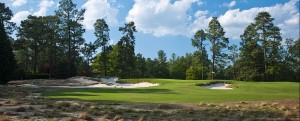
Day 10 Open
Buck had asked me to move up our date at Augusta because he was leaving for Europe the next day, and thus this was the first open day of the trip. Noticing that we were going to be in Pinehurst, Buck had asked me to play his new course, Forest Creek, while we were in the area. Now how do you say no to your Augusta National host? Before the trip started I had never envisioned playing more than 100 courses, so I promised Buck that I would come back in the fall to play Forest Creek. Instead we drove out to the site, had lunch with the head professional Waddy Stokes, and rode around the Fazio-designed course in a cart.
Most of the day was spent in getting organized because the inside of the car was a mess. The week before the trip started had been frantic, and I had just jammed all my course files and correspondence and other boxes of material into the car. We also arranged to have the first batch of laundry done. Dinner at the Lob Steer Inn in Southern Pines was somewhat above average (sensational compared with what we had experienced over the past few nights).
TO BE CONTINUED
About the Author: Gordon Dalgleish is the Co-Founding Director of PerryGolf, the leading provider of international golf vacations. You can find him on Google+
